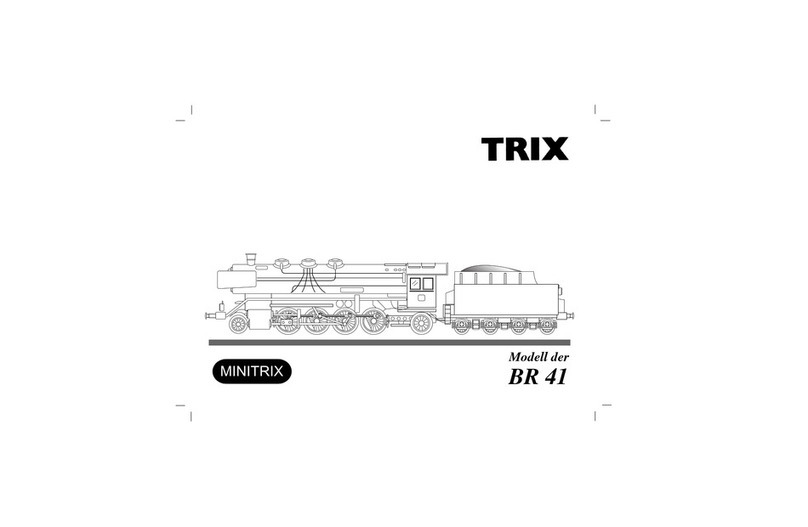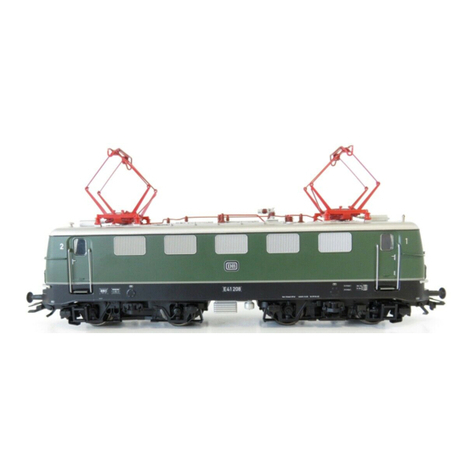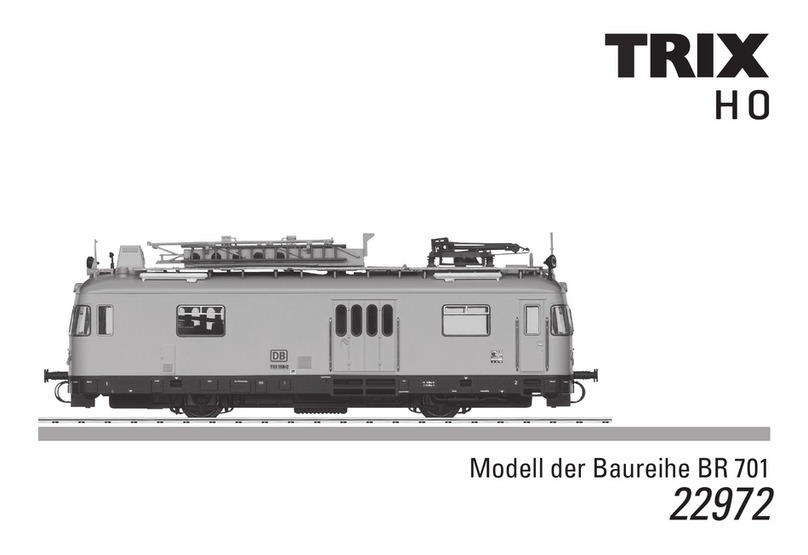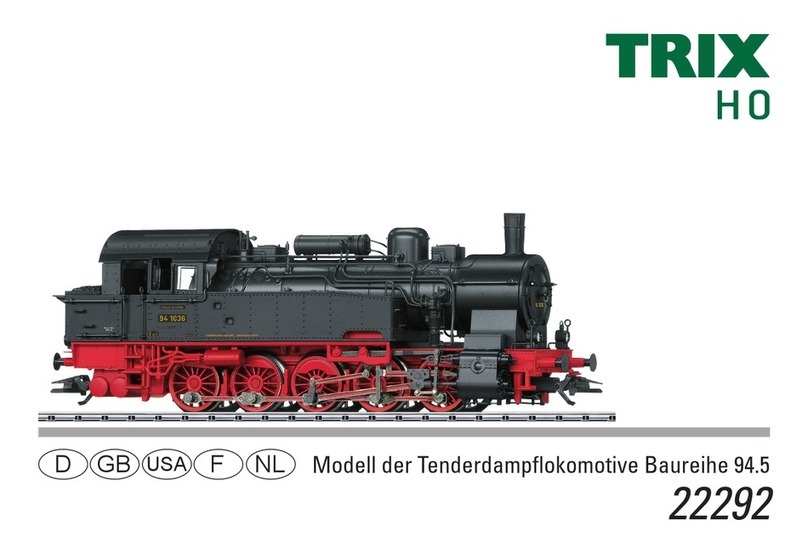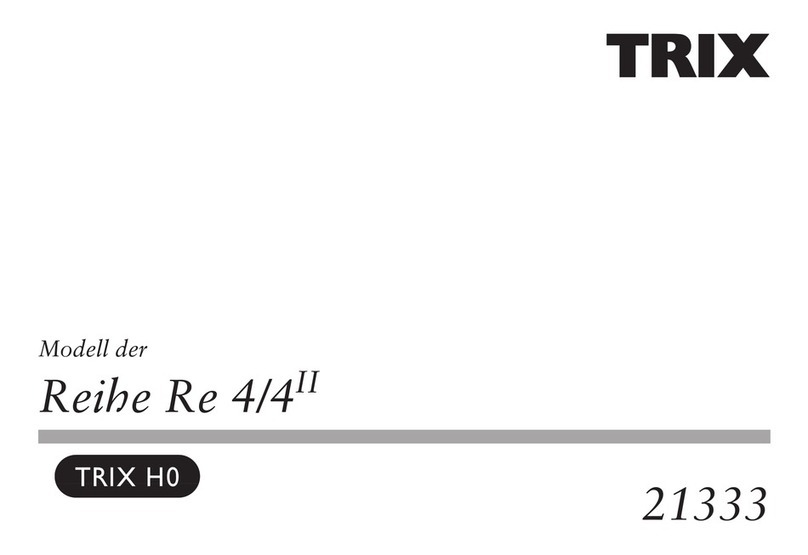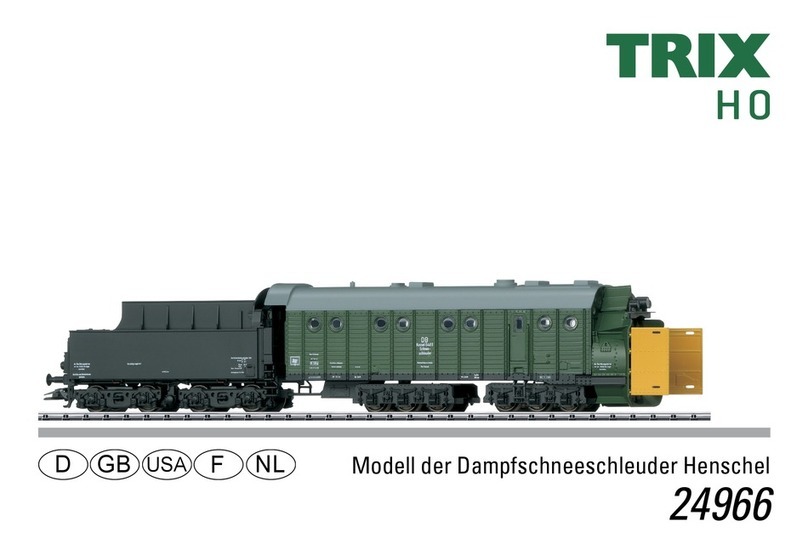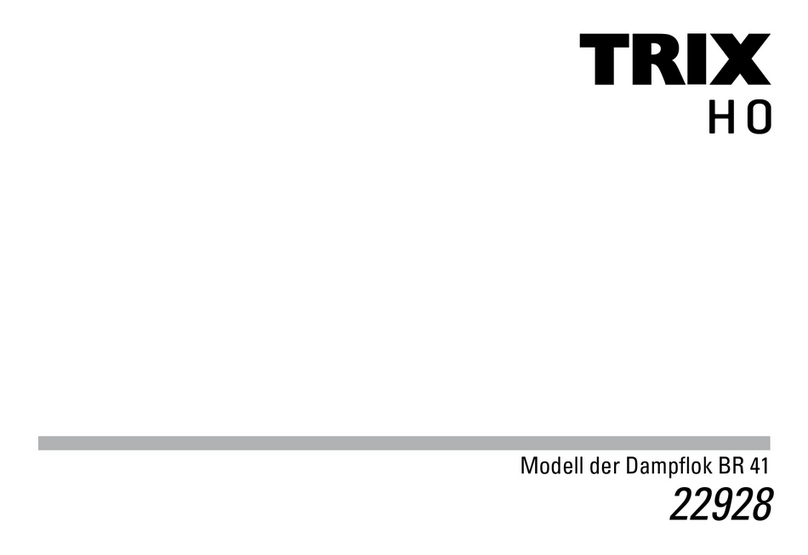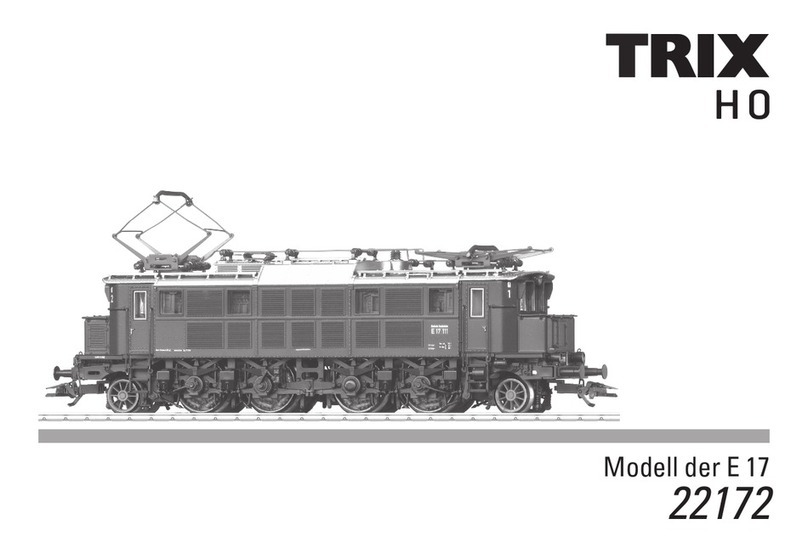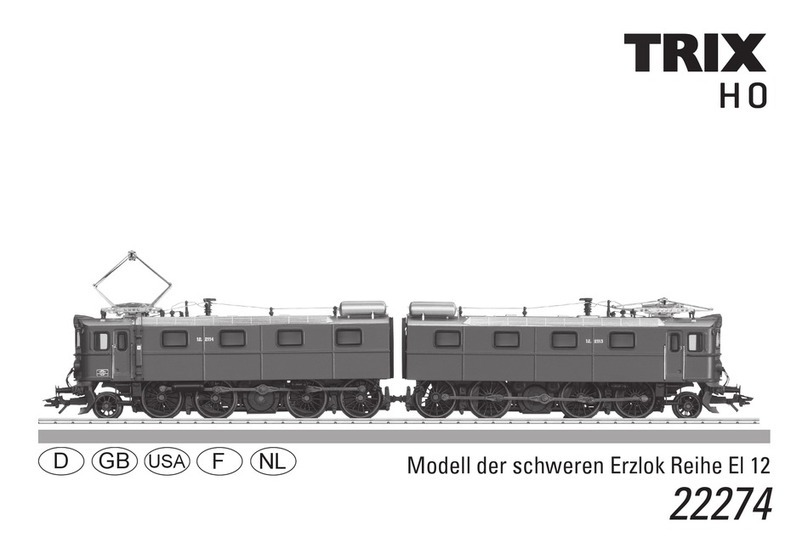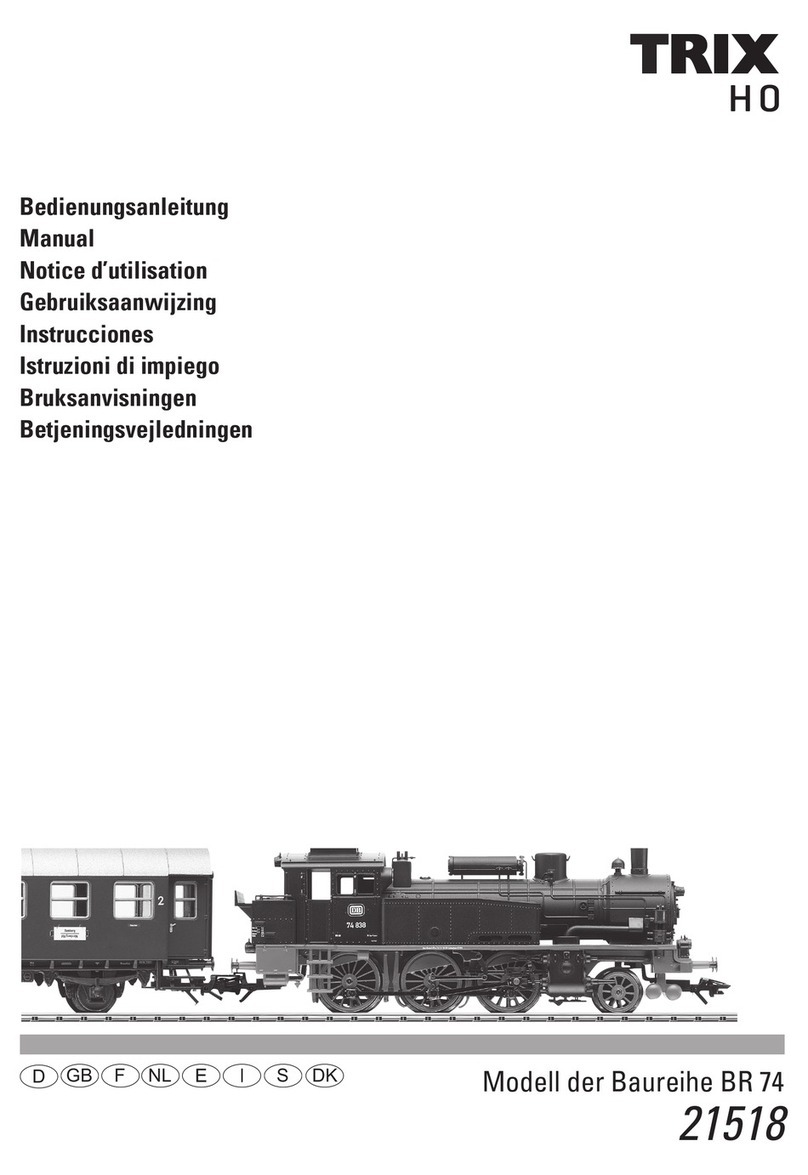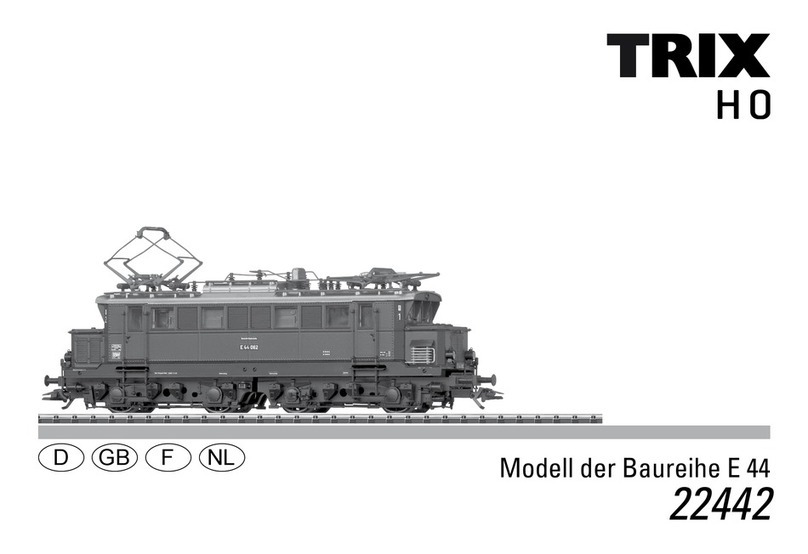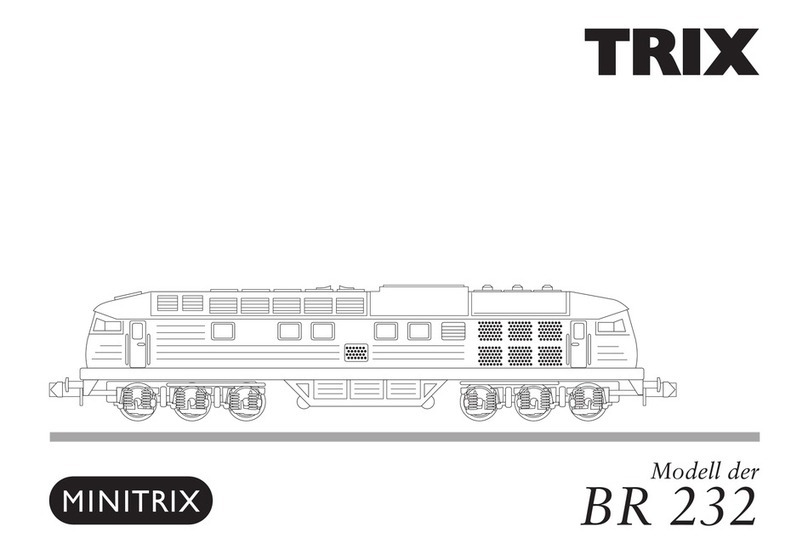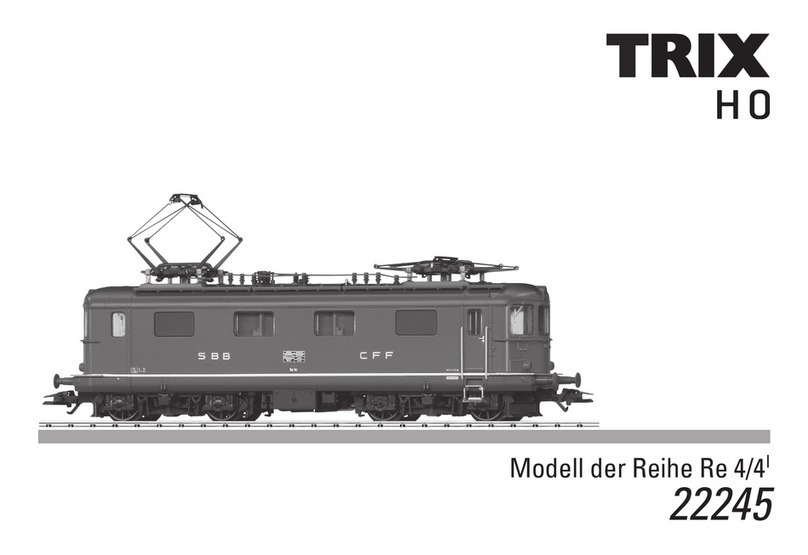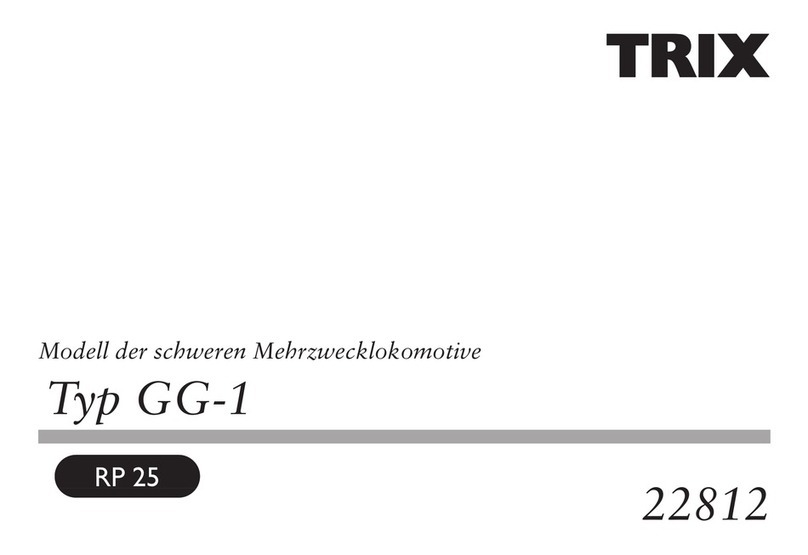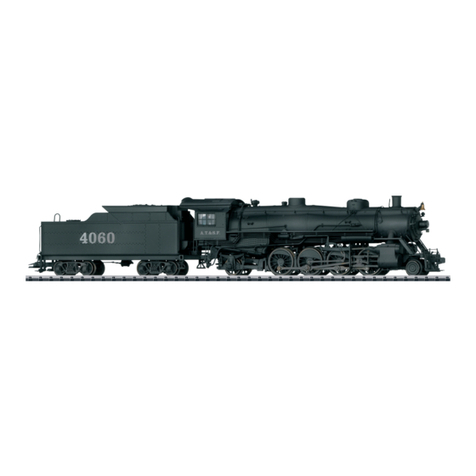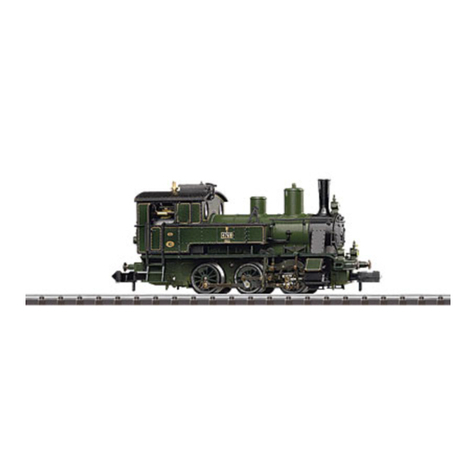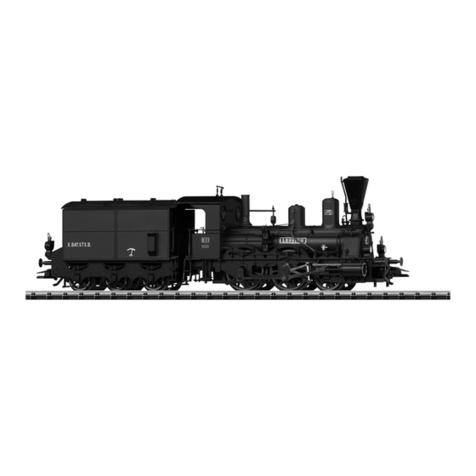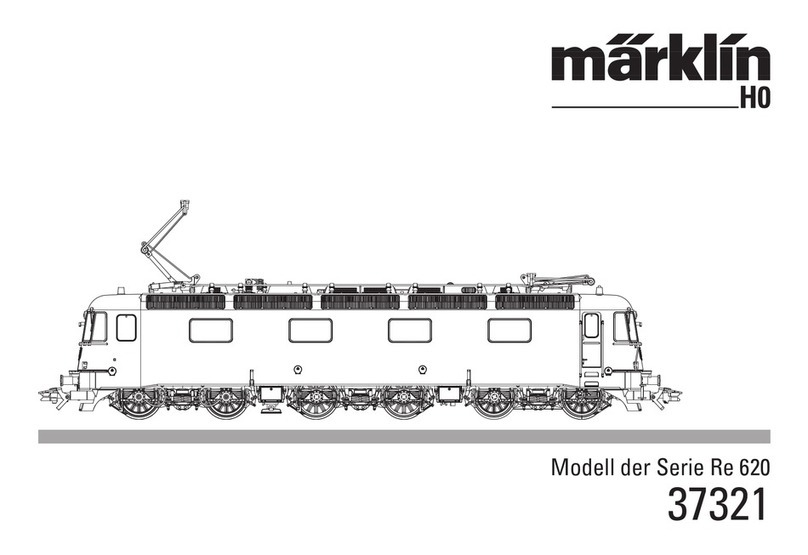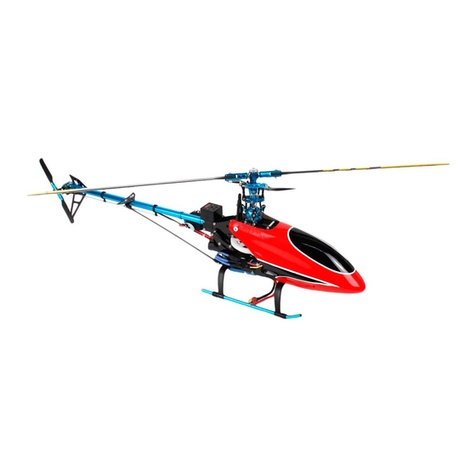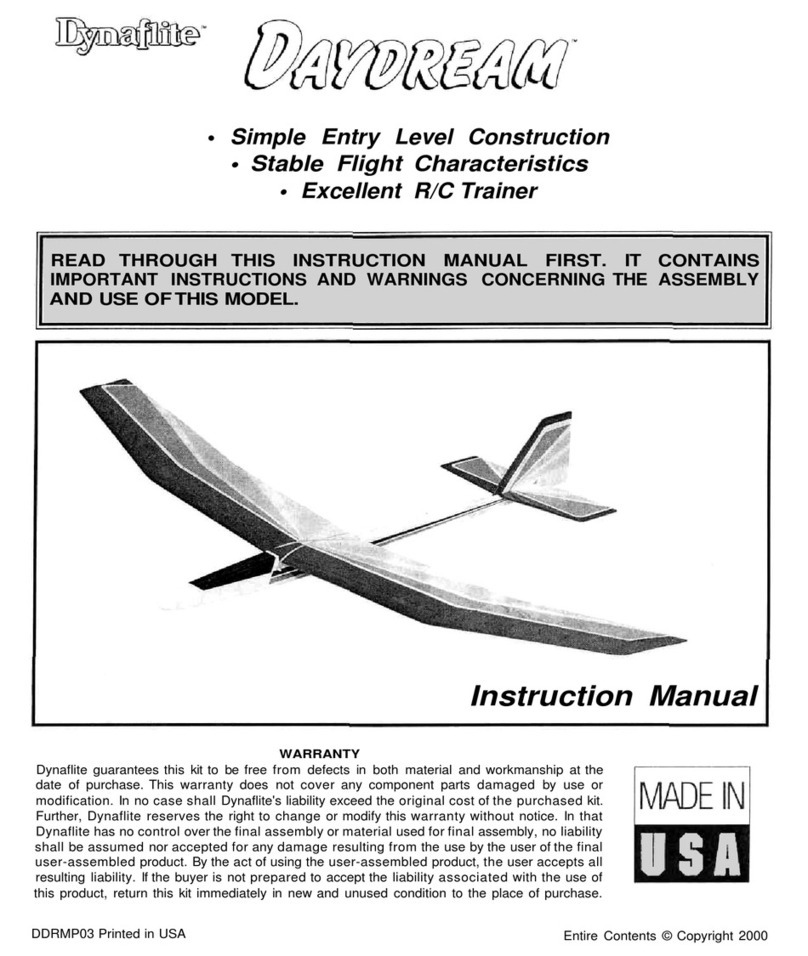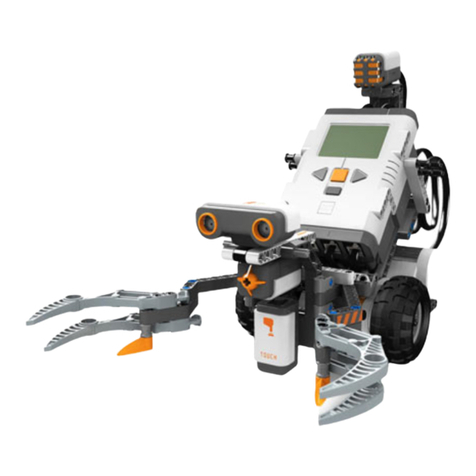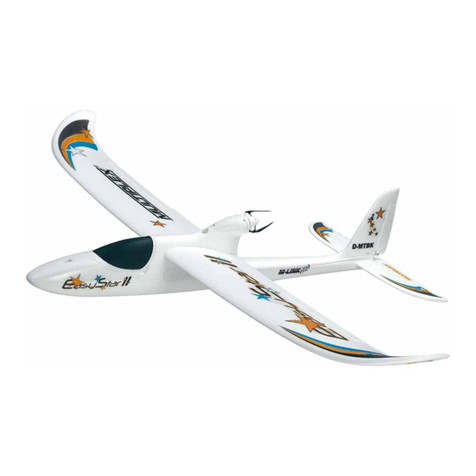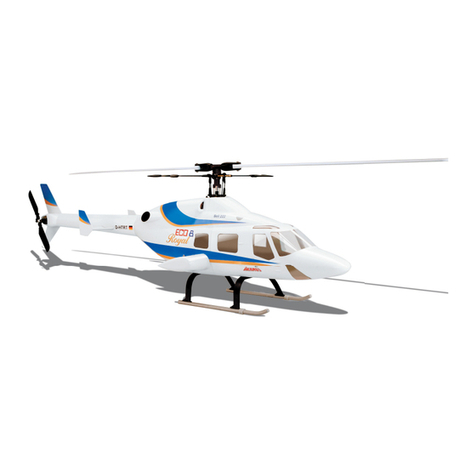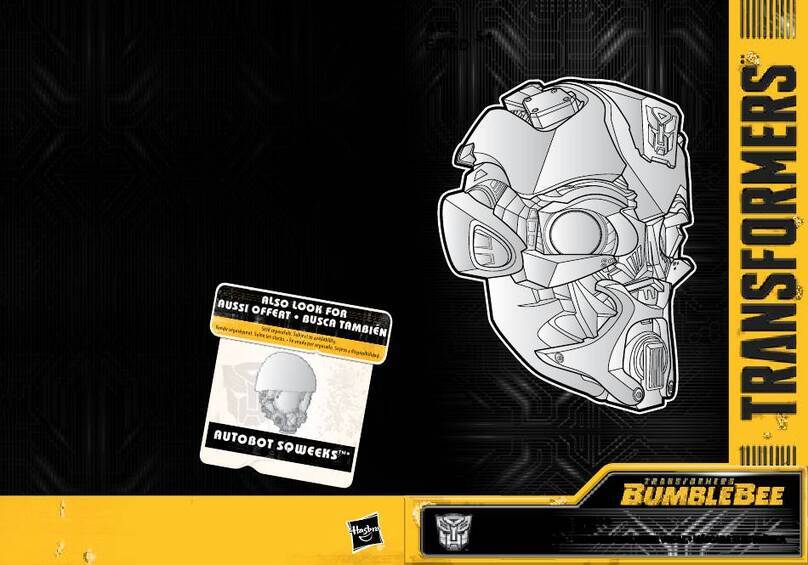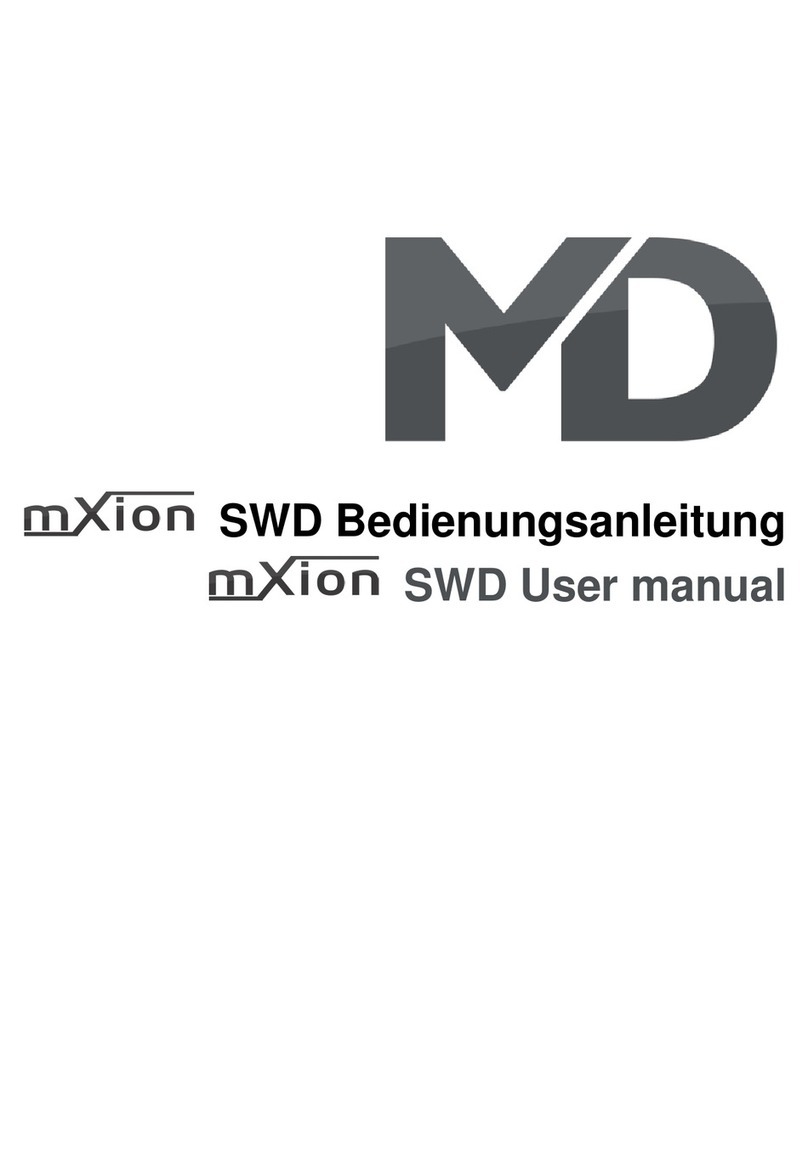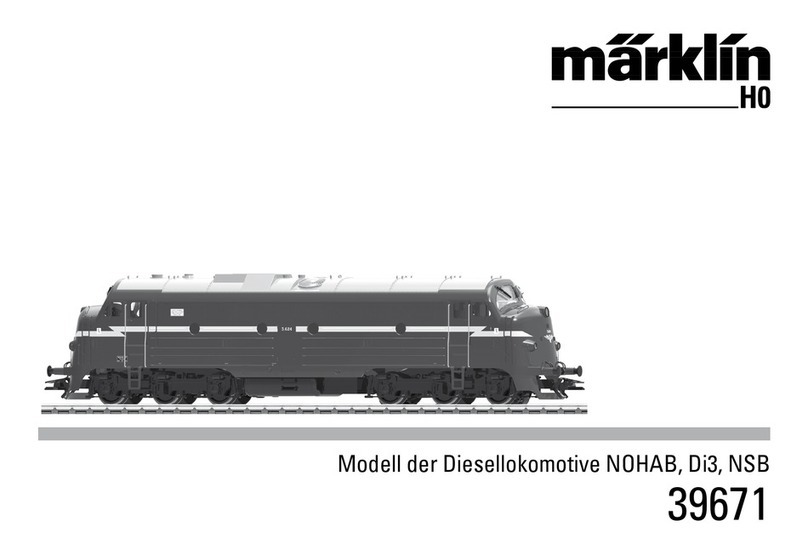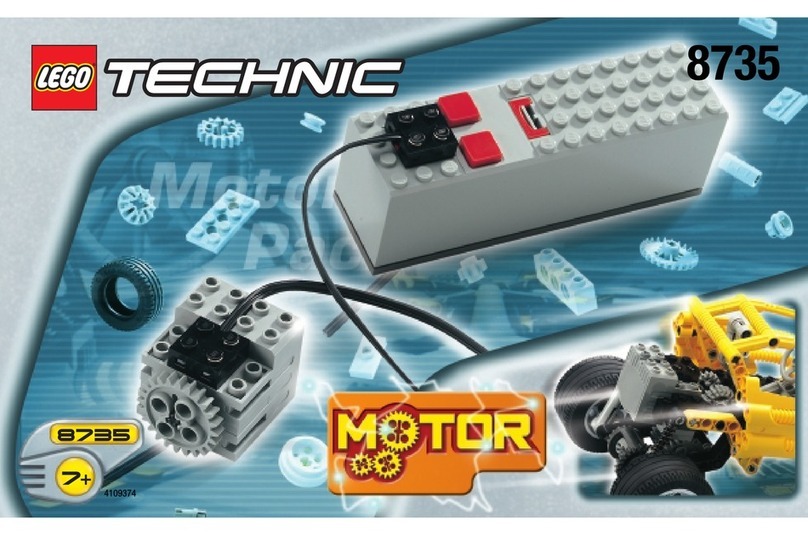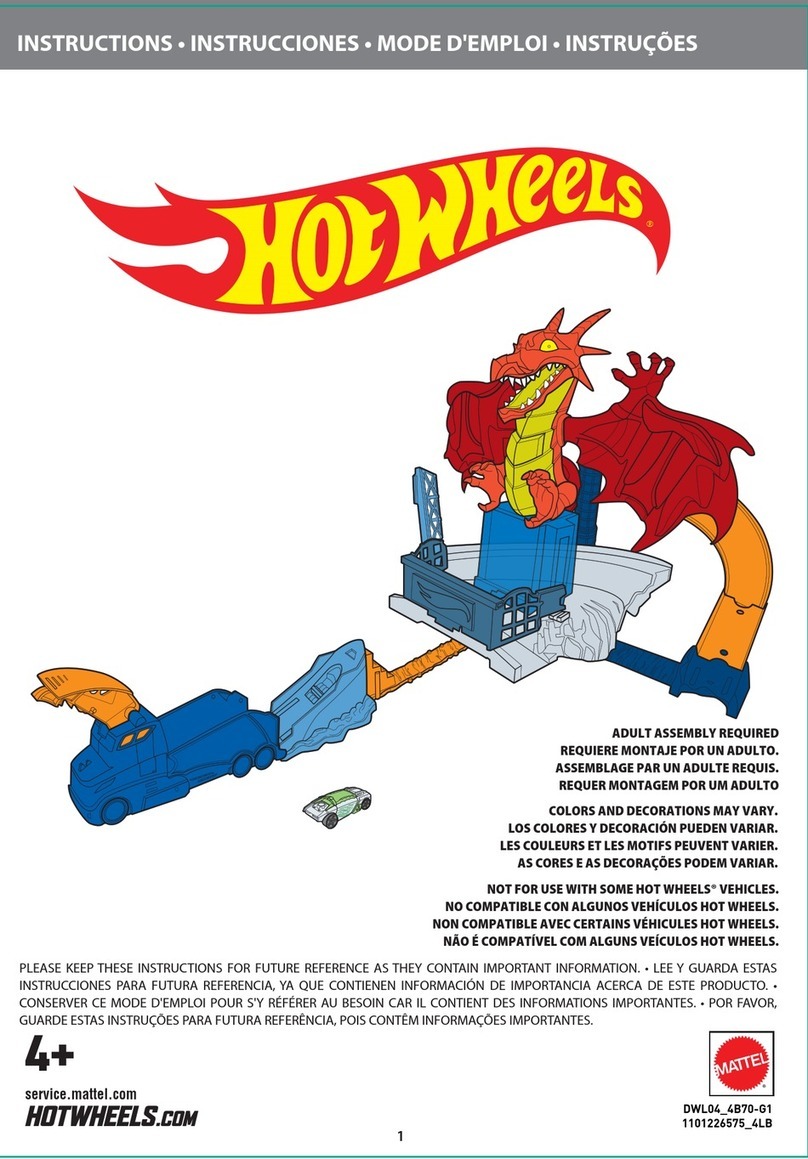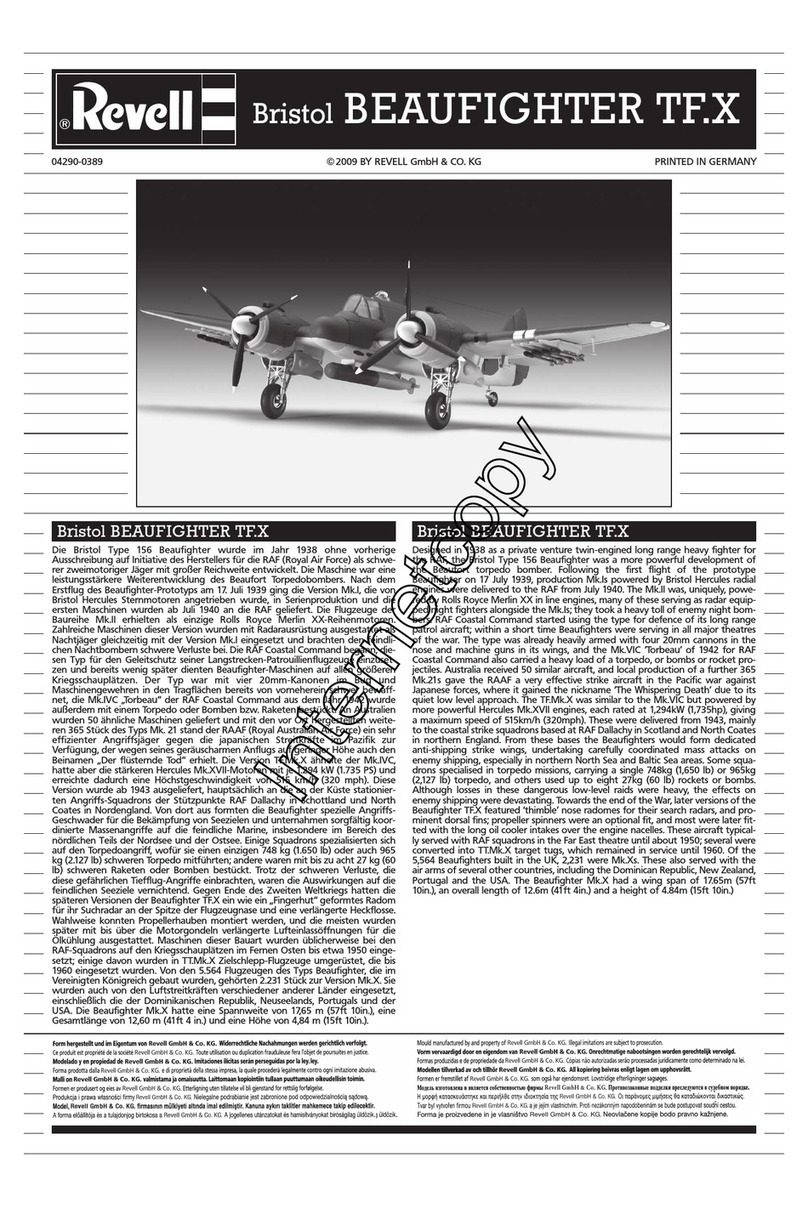4
Informationen zum Vorbild
Nach verschiedenen Versuchen mit den von den BB 9400 ab-
geleiteten Prototyp-Lokomotiven BB 30001 und 30002 (früher
als 26001 und 26002 immatrikuliert), beschloss die SNCF eine
Lokomotive zu bauen, die unter 4 verschiedenen Spannungen
fahren kann: die CC 40100. Ihr innovatives Design machte aus
diesen Maschinen die ersten mit einer sogenannten „gebro-
chenen Nase“ (nez cassé) an den Triebköpfen. Das Erschei-
nungsbild der CC 40100 ist eng verbunden mit den Edelstahl-
wagen der TEE Paris-Brüssel-Amsterdam oder Mistral 69, mit
denen sie bis zur ihrer Ausmusterung in Umlauf waren. Einige
Jahre nach der Lieferung der CC 40100 beschloss Belgien
identische, aber für 3 Spannungen ausgelegte Lokomotiven
einzustellen, die zur berühmten BR 18 gehören und in den
Farben Stahl, gelb und blau gehalten sind.
Während ihrer kurzen, kaum dreißigjährigen Laufbahn hat
die gesamte Baureihe der CC 40100 einen sehr beachtlichen
Einsatz zwischen Brüssel und Paris geleistet. Die ständig
steigenden Unterhaltskosten und ihre nachlassende Zuver-
lässigkeit ließen damals eine mehr als ungewisse Zukunft
voraussehen. Erst im Sommerfahrplan vom 31. Mai 1996
wurden die letzten noch im Einsatz stehenden Maschinen,
die 40109 und 40110, aus dem Bestand der SNCF gestrichen,
als der TGV Thalys PBA (=Paris-Brüssel-Amsterdam) seinen
Dienst aufnahm. Bis zur ihrer Ausmusterung am 12. Juli
1999 verkehrten die Maschinen der belgischen BR 18 auf
anderen Strecken.
Das Verschwinden der CC 40100 beendet die Blütezeit
der TEE, die in der zweiten Hälfte des 20. Jahrhunderts in
ganz Europa verkehrten. Die CC 40101, 40109 et 40110 sind
erhalten geblieben.
Information about the prototype
After different attempts with the BB 30001 and 30002
(designated earlier as road nos. 26001 and 26002) prototype
locomotives developed from the BB 9400, the SNCF decided
to build a locomotive that could be run under 4 different
voltages: the CC 40100. Its innovative design at the ends
of these locomotives made them the first of the so-called
„Broken Noses“ („Nez Cassé“ in French). The typical look
of the CC 40100 is closely linked with the stainless steel cars
for the Paris-Brussels-Amsterdam TEE or the Mistral 69, and
it ran with them until it was retired. Several years after the
delivery of the CC 40100, Belgium decided to use identical
locomotives (but designed for 3 voltage systems) that were
part of the famous class 18 and that were maintained in
stainless steel along with the colors yellow and blue.
All of the class CC 40100 locomotives performed notably
between Brussels and Paris during their short career of
barely 30 years. The constantly rising maintenance costs
and their decreasing reliability left them prey to a more than
uncertain future. The last units still in service, road nos.
40109 and 40110, were not removed from the SNCF roster
until the summer schedule of May 31, 1996, when the TGV
Thalys PBA (= Paris-Brussels-Amsterdam) entered service.
The Belgian class 18 units were in service on other routes
up to their retirement on July 12, 1999.
The disappearance of the CC 40100 ended the heyday of
the TEE trains that run all over Europe in the second half of
the 20th century. Road nos. CC 40101, 40109, and 40110 have
remained preserved.
